Fabulous Food Plants
Fabulous Food Plants: Design, build, succeed
The decision to build a new food plant or upgrade usually comes down to which option will keep processors competitive
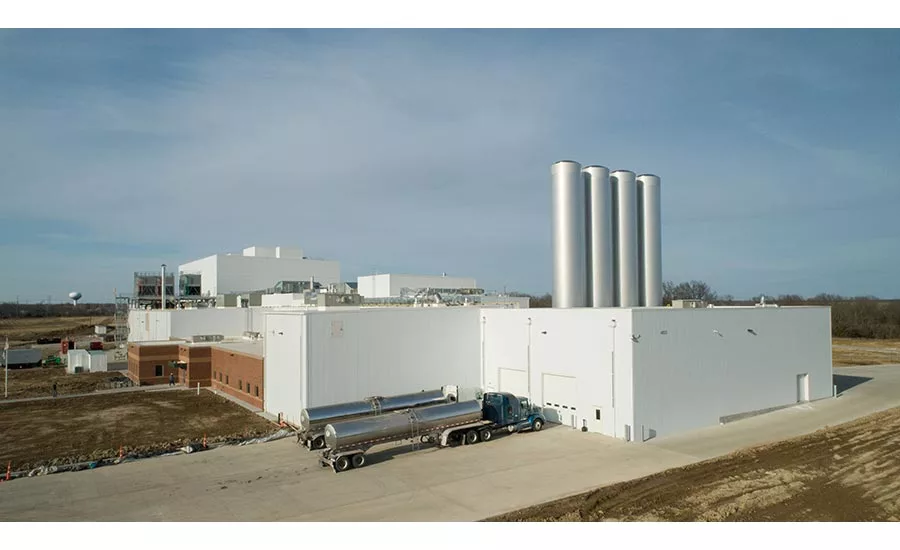
Big-D Construction’s National Food & Beverage Group oversaw the construction of the Aurora Organic Dairy facility. The relationship between Big-D and AOD goes back to 2006.
Photo courtesy of Drake Busch
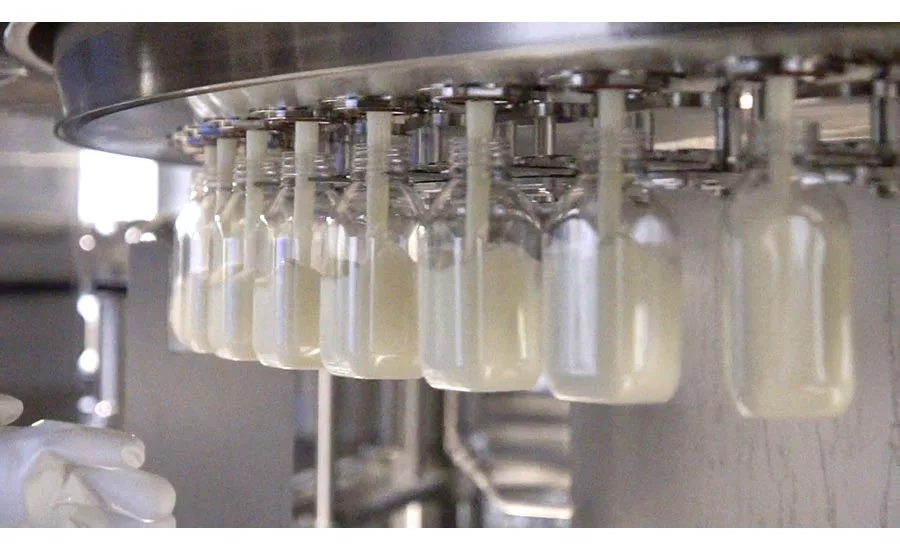
New aseptic bottling equipment lets Aurora expand its products to 8, 12, 16 and 32 oz. PET bottles, opening new retail markets for its organic milk products.
Photo courtesy of Drake Busch
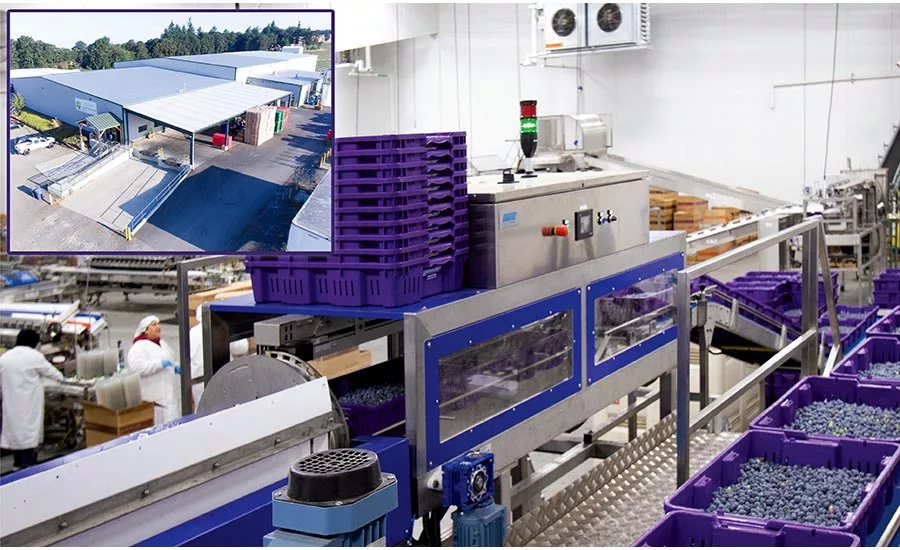
AC Foods needed a quick start on a blueberry processing facility, so it conferred with Fisher Construction Group to renovate an existing facility (inset). After the first season, two additional facilities were built to support the operation.
Photo courtesy of Fisher Construction Group
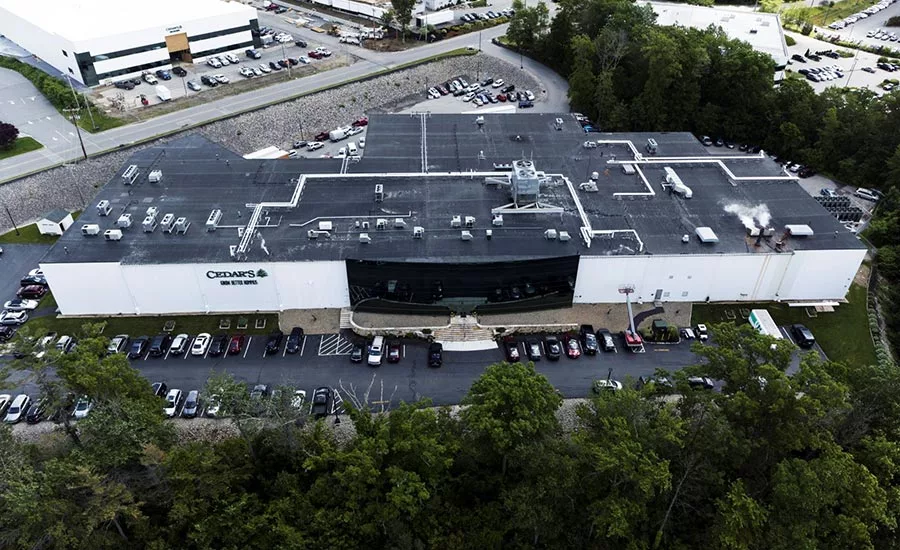
Cedar’s Mediterranean Foods Inc. needed to construct another processing facility at its Ward Hill, Mass., campus. With a totally automated process, the facility helped double the output of products from 104 to 208 million pounds annually.
Photo courtesy of Cedar’s Foods
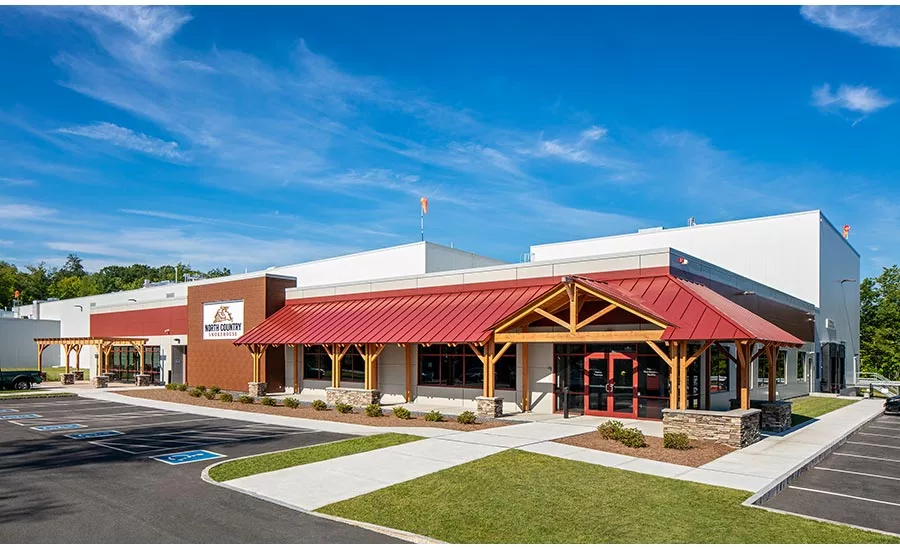
North Country Smokehouse’s new facility in Claremont, N.H., has a linear design for efficiency and safety.
Photo courtesy of CMC Design-Build
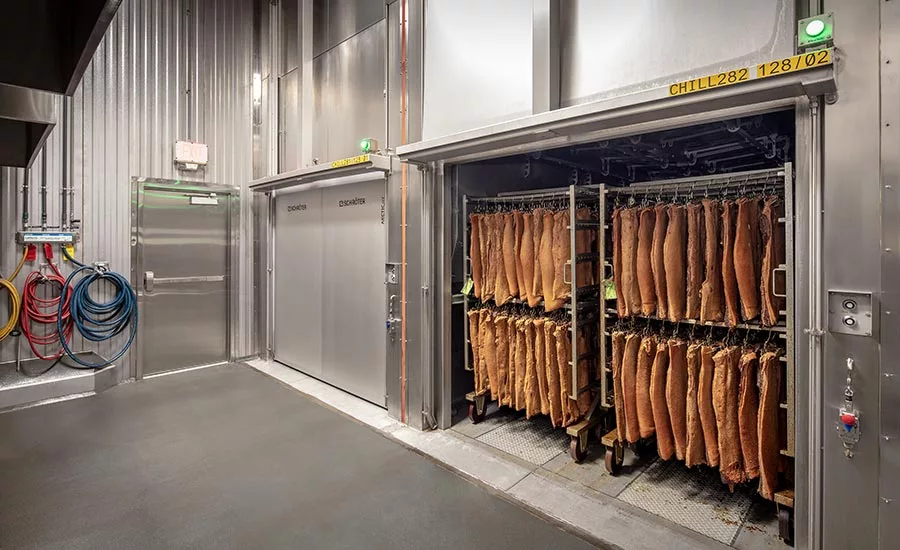
Racks of smoked pork bellies enter a blast chill cell.
Photo courtesy of CMC Design-Build

The Starbucks August, Ga., facility’s receiving area accepts deliveries of green coffee beans that are stored for roasting. Stellar’s expansion added six new whole bean roasters, allowing the facility to produce up to 146.8 million pounds of coffee per year.
Photo courtesy of Stellar

Tippmann Innovation designed a new production/cooler facility for Wolverine Packing in Detroit’s market district, which includes a park immediately behind the building.
Photo courtesy of Brian Richardson, Michigan Video and Photography
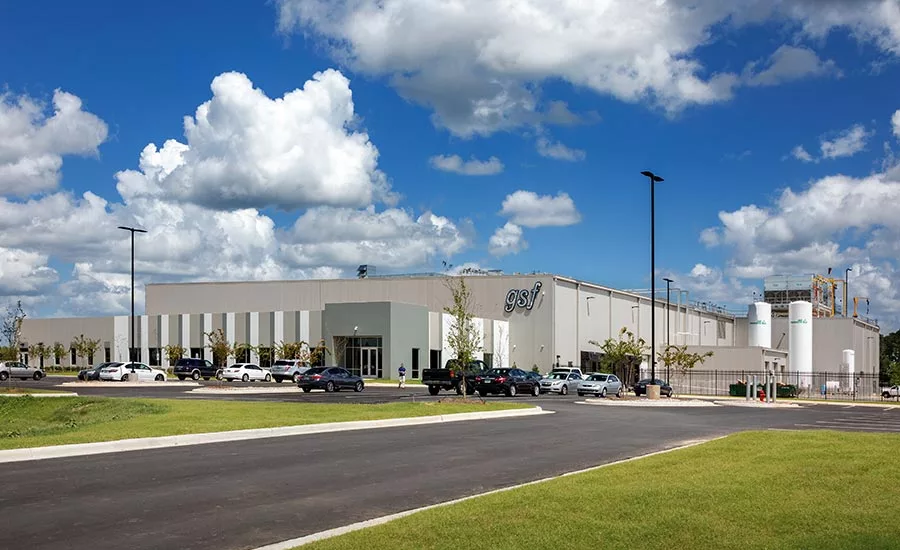
With a focus on food safety, Golden State Foods selected Clayco as the design-builder for its new facility.
Photo courtesy of Clayco
Often, FE editors pick a single food or beverage plant as a Fab Food Plant feature story. However, this month, we’ve selected a few facilities—either upgraded or new—that provide solutions to special problems when processors needed to improve quality or increase production levels. But in every case, the endgame is to remain competitive in their market.
What these projects show is that renovations and new facilities aren’t just for the billion-dollar food and beverage processors. Small and medium-sized processors can benefit from properly scaled and engineered solutions too. And automation often plays a big role in making a facility more competitive.
Our Fab Food Plant picks:
New organic plant, new bottles, focus on new markets
Aurora Organic Dairy has transformed the U.S. organic dairy market since it began producing organic milk in the early 1990s. With 40-plus years of dairy farming experience, AOD began bottling milk from its farms in 2004 with its first milk plant in Platteville, Colo. From there, the vertically integrated company—serving the store brand market—was able to ship ultrapasteurized organic milk in half-gallon cartons and gallon jugs across the country.
In early 2019, AOD expanded its processing operations with its second organic milk plant in Columbia, Mo. With the first organic-dedicated aseptic small bottle line in the U.S. and sustainability features throughout the facility, this 127,000-sq.-ft. milk plant is truly innovative.
Big-D Construction’s National Food and Beverage Group oversaw the construction of the Columbia facility. The relationship between Big-D and AOD goes back to 2006, as the company expanded its Platteville plant several times to keep up with the high-growth organic dairy sector. MSKTD Architects designed the new processing facility, while Big-D served as general contractor and worked with several suppliers that have a history with AOD in Colorado to complete construction in less than two years.
AOD’s mission is to deliver organic dairy integrity, from cow to carton to everyone, everywhere. The company’s new processing facility aligns perfectly with that mission. With about 100 new employees in Columbia, AOD processes half-gallon, extended-shelf life cartons, making its shipping more efficient to Eastern U.S customers. It also installed an aseptic small bottle filler, expanding its shelf-stable white, flavored and nutritionally fortified milk products to 8, 12, 16 and 32 oz. PET bottles. The small bottle product expansions allow AOD to enter new retail channels, such as drug and convenience stores.
AOD focuses on sustainability at every step of its supply chain—from the feed and pasture crops it grows for its dairy cows to its eight organic dairy farms, milk transportation, processing and cold storage. The Columbia facility was built with the latest equipment to conserve energy. Variable speed motors, heat exchangers and low wattage lighting are just some of the examples of sustainability features built into this facility. As a Colorado-based company, AOD works to conserve water as a valuable natural resource. As a result, each of its facilities invests in water-saving technologies and water recycling efforts.
A focus on the planet is just one tier of AOD’s Animals, People, Planet: Products with Integrity brand promise. The company designates the care of its people and animals as its top priority. AOD offers employee benefits that are uncharacteristic in the agriculture and food manufacturing sectors and provides comprehensive job training for employees.
In addition, AOD works with third-party experts to audit its operations for fact-based feedback and continuous improvement. Each of its dairy farms voluntarily carries organic certifications from two USDA-accredited certifiers. AOD’s farms are inspected by third-party auditor Validus Associates for compliance with its Animal Welfare Review program. This elective program focuses on livestock conditions, the herds’ environment, and the training and accountability protocols in place with farm employees.
With a commitment to animals, people, planet and making products with integrity, Aurora Organic Dairy’s Columbia, Mo., milk plant is an extension of this unique culture and vertically integrated company. It is a true testament of several like-minded organizations coming together to realize a vision.
From Christmas trees to blueberries
Sometimes a producer doesn’t have the luxury of building a brand new building—at least for starters. So when Agriculture Capital Foods needed a facility near its Silver Mountain (Sublimity, Ore.) blueberry fields, the producer looked at a building that was previously used to start Christmas tree seedlings.
Finding an already constructed facility that could be renovated and turned into a highly automated, food-safe blueberry processing facility was the order of the day.
To find out whether it was feasible and economical to repurpose the 45,000-sq.-ft facility, AC Foods enlisted the help of Fisher Construction Group of Burlington, Wash. Fisher is no stranger to designing produce facilities and cold storage/distribution centers, having won the 2018 Controlled Environment Building Association’s (CEBA) Built by the Best Award for its NewCold project in Tacoma, Wash.
Fisher Construction’s project design-build team met with AC Foods to discuss the conversion, which used extensive automation designed to treat the fruit with care. Using a phased construction approach, Fisher converted the former Christmas tree seedling facility into a blueberry processing plant.
Prior to the first season, the processing area was completely renovated, adding multiple food safety features, including washdown walls and spot drains. A new refrigeration system was installed, and blast cooling rooms were built. Because the facility is located in a rural area, fire protection requirements are different from what would be expected in a suburban area. Fisher designed and built a wastewater lagoon, which doubles as a source of water for firefighting.
Once the renovation and installation of production equipment (including vision inspection/sorting equipment) was completed in the existing building, and the first blueberry season was over, it was time for some new construction, which added a 25,500-sq.-ft. fully racked cooler and loading dock with seven truck positions. The new space also included blast cooling rooms and a new refrigeration system.
The project also added a 10,800-sq.-ft. dry storage building. Other features included a wood timber entrance and ADA ramp, a lug conveyor installed between exterior and interior wash areas, IMP (insulated metal panel) walls, epoxy floor and concrete curbs in the packing room.
Fisher and AC Foods discussed methods to regulate the cooling of fresh-picked blueberries more efficiently. In response, Fisher designed and built a custom cable system to raise and lower tarp canopies over the totes of berries as they cool.
By working with Fisher’s team, including its MEP (mechanical, electrical, plumbing) food processing specialists, AC Foods was able to concentrate on its business as a vertically integrated grower, processor and shipper of quality, food-safe blueberries.
Keeping up with hommus orders
Cedar’s Mediterranean Foods Inc. has its beginnings in the old world when founders Abe and Layla Hanna made hommus in the traditional way—with pure ingredients and a simple process. When the family moved to the U.S., it brought the hommus recipe along and made batch after batch using fresh ingredients, with the product catching on fast in New England where the family established its new business.
Cedar’s Foods found the popularity of its original hommus and other Mediterranean foods had grown faster than anticipated. Sales throughout the U.S. mushroomed, and Cedar’s needed to double its output to keep up with the demand.
But to go from 104 to 208 million pounds of output annually required some serious expansion. Cedar’s added a new 125,000-sq.-ft. automated facility, enabling the company to support its selection of signature products and a budding private-label co-manufacturing business. With an investment of $100 million, the new facility will be in operation by the time you read this article.
“Cedar’s is dedicated to providing our customers with the highest quality, authentically crafted hommus and Mediterranean foods, using the best ingredients inspired from authentic recipes passed down by our founders,” says Chris Gaudette, Cedar’s Foods CFO. “This investment represents our long-term commitment to expanding our brand and growing the category, while retaining our values as a local, family-owned company.”
After a year of construction, the new facility created 125 jobs, adding to the 750 employees who already work in three facilities at the Ward Hill campus. Cedar’s has an 87,000-sq.-ft. production facility, an 87,000-sq.-ft. distribution facility and a 75,000-sq.-ft. dry storage facility. The new space brings the total footprint to nearly 375,000 sq. ft.
The new structure features a fully automated production process, using Cedar’s proprietary processing systems. Advanced robotic technology is used extensively to perform many key functions.
In an area not known for cheap energy rates, Cedar’s collaborated with local utility companies to optimize efficiencies and installed LED lighting systems, high-performance HVAC systems, heat recovery systems and variable frequency drive (VFD) technologies in motors throughout.
“We believe that this will be the most advanced hommus manufacturing facility ever built,” says Nick Scangas, Cedar’s Foods COO. “We have successfully adopted the latest technology, which will control costs and increase efficiencies, all while maintaining our proven success of delivering products without the use of preservatives. This truly is a win-win for Cedar’s, our customers and the environment.”
“We built this company on our family values and recipes, growing it through the hard work of our dedicated management team, employees and loyal customers. For this we are truly grateful,” says CEO Charles Hanna. “I am immensely proud that our company, which was founded nearly four decades ago, has blossomed into such a successful national brand.”
Cool smokehouses, hot energy savings
North Country Smokehouse has produced artisanal meats and cheeses since 1912, when Abraham Satzow, an old world butcher, set up a horse-drawn wooden cart and began selling smoked meat to his New Hampshire neighbors. Two generations later, grandson Mike Satzow follows the family traditions of producing quality smoked meats and cheeses. The popularity of North Country’s products, however, created a real problem.
In 2016, the company was no longer able to meet customer demand at its single site, so it selected CMC Design-Build to design and construct a new 65,000-sq.-ft. manufacturing facility. Since the company had been a fixture in it community for over 100 years and wanted to remain there, the first task was to find a suitable building site within the city.
Once an appropriate site was located, CMC Design-Build collaborated with the North Country team to develop a layout that maximized operating efficiency and food safety. The company wanted a linear plant that received raw materials at one end and shipped packaged, finished goods at the other. Multiple production lines run through the facility with full segregation of the ready-to-eat and ready-to-cook products. RTC and RTE products come together only after they are fully packaged and ready for shipping.
Key to maintaining product quality, a central ammonia refrigeration system was installed to provide cooling of all the refrigerated spaces and to support three new blast chillers. Each chiller was paired with a smokehouse, all of which have dedicated entrance and exit doors—part of the linear process flow that prevents cross-contamination. All of the main process rooms (both raw and finished) are refrigerated, using hygienic air handling units that introduce filtered, outside air, conditioned to 38°F. These units can be switched into exhaust mode to improve the sanitation process and reduce the time to dry out the rooms following washdown so that North Country can quickly get back into production.
The refrigeration system is controlled by a network computer that minimizes utility consumption and allows the operators to view performance of the system, even when offsite. Additionally, the control system tracks the temperature of all of the rooms and will automatically send out an alert to maintenance in the event of a system malfunction.
Other energy efficient upgrades include LED light fixtures with individual motion sensors, high efficiency hot water and steam generators, upgraded insulated metal panel walls and ceilings for improved R-values, vertical dock levelers to prevent infiltration at the refrigerated docks, and high performance insulated traffic doors. All of these features add up to a significant estimated annual electrical savings of 1.2 million kWh (1200 megawatt-hours).
Completed in October 2018, the new facility has more than five times the production capacity of the previous facility. More important, its design and systems ensure that North Country Smokehouse is leading the industry in food safety, energy efficiency and operational efficiency.
Starbucks expands Augusta soluble coffee plant
Stellar recently completed an expansion of the Starbucks soluble coffee plant in Augusta, Ga. The main facility was designed and built by Stellar, and it’s regarded as one of the most advanced soluble coffee facilities ever built in the United States. In fact, Starbucks reinvented the way soluble coffee is made—and did it sustainably. See “Starbucks brews up advanced technologies,” FE Fabulous Food Plant, December 2015.
The plant is the first company-owned facility in the world to produce Starbucks soluble products. The coffee roasted at the plant is used in Starbucks VIA Instant, as well as in the coffee base for Frappuccino blended beverages and many of the Starbucks bottled and canned drinks. The plant produces packaged coffee for Starbucks stores and retail locations in the Northeast and Southeast United States.
The $121 million design-build project added 150,000 sq. ft. to the building, doubling its size to a new total of about 325,000 sq. ft. Prompted by Starbucks’ growth and consumer demand, the expansion added six new whole bean roasters, allowing the facility to produce about 100 million pounds of coffee per year at maximum capacity.
“Our biggest design improvement was implementing a unique flexible layout and process that allow Starbucks to transfer product from any one of the plant’s unroasted coffee storage silos to roasted bean storage all the way through to any one of the plant’s packaging lines,” says Jonah Petoskey, senior project manager at Stellar.
Stellar also designed and installed provisions for two future packaging lines to accommodate continued growth. The LEED-certified plant features renewable energy, efficient lighting, water recovery and green roasting equipment.
Compared to other food sectors with governing bodies such as the FDA and USDA and strict guidelines like 3-A, there is no governing body or food safety guidelines dedicated to the soluble coffee sector. However, to ensure a world-class facility, Starbucks voluntarily adheres to one of the world’s most rigorous food safety and quality certification programs: the British Retail Consortium’s Food Safety Standard.
To meet the standard, Stellar built several cutting-edge innovations into the plant:
- Advanced automation to minimize human intervention—The entire soluble process is run from a central control room. Aside from quality control checks, the only time human hands touch the product are when beans are unloaded in the receiving area and when the ground coffee is loaded into extraction.
- Green bean receiving—Rather than pouring beans into traditional pits, the plant’s receiving silos are placed in elevated walled-in platforms (in green loading) to prevent foreign particles from being swept in and to keep beans off of grates that see foot traffic.
- Separation of raw and finished product—To prevent cross-contamination, the “raw” side of the plant for green beans is completely separated from the “cooked” or finished side, including their respective traffic patterns and waste streams.
- Back-in dock doors—The plant features rubber-sealed dock doors that allow trucks to make deliveries without opening the loading bays to potential airborne contaminants outside.
The latest expansion increased Starbucks’ production capacity while still maintaining rigorous food safety and sustainability standards.
“We were proud to once again partner with Starbucks and take this award-winning facility to the next level,” says Todd Allsup, vice president of sales for Stellar’s Food Group. “This is a state-of-the-art coffee plant unlike any other in the country, and it speaks to Starbucks’ commitment to innovation, sustainability and delivering a high-quality product.”
Wolverine Packing builds processing/freezer facility
Born out of a meatpacking tradition that started in Detroit’s Eastern Market district, Wolverine Packing Co. is now in its third generation of family ownership. What started in 1937 as a small lamb and veal packer has turned into a full-faceted protein company with multiple plants producing ground beef items, steak cutting, value-added products, and still to this day, fresh lamb and veal. Wolverine attributes its growth to its valued customers and the employees that make it all work. Today the company serves customers in all 50 states and in many countries around the world.
With a plethora of warehouses and four processing facilities, the co-owners, Jim Bonahoom and his son, Jay, felt it was time to build a fifth processing operation with a large freezer facility to simplify some of the company’s warehouse operations. So they settled on building a facility in the market district of Detroit that would better serve their needs.
“The reason we built this facility was because we were storing product in 36 different facilities around the United States, and we have so much product in outside cold storage, some of which was critical to our operation, that we wanted to have full control over it,” says Jay Bonahoom.
The warehouse, which occupies 180,000 sq. ft. and has capacity to store 20,000 pallets, expands the location’s footprint to the north and sits on a reclaimed residential neighborhood, previously home to 32 housing structures buried underneath a public park. As part of the brownfield contract with Detroit, Wolverine paid to redevelop about four acres of the property into a revitalized park for families in the surrounding neighborhood. Wolverine Packing needed to find a contractor with experience in cold storage as well as working with brownfield sites to construct a new plant.
The company turned to Tippmann Innovation for some solutions. “What made Tippmann Innovation unique was not only their experience in building cold storage and processing facilities, but also their ability to complete the civil engineering and brownfield assessments while communicating with the state’s environmental department to ensure everything was up to code,” says Jay Bonahoom. “It was a huge asset to have a contractor with a complete understanding of brownfield laws and the experience to build a world-class facility.”
“Tippmann has been on time and on budget, [and] they are incredibly responsive,” adds Bonahoom. “They taught us a lot about what’s possible in a freezer type building; they led us through that process to make sure that we had it designed right from the beginning so there weren’t too many change orders.”
Golden State Foods adds protein-only facility
Golden State Foods is one of the largest, diversified suppliers to the retail food and restaurant industries, servicing about 120,000 restaurants in more than 40 countries from its 40-plus locations in five countries. The processor’s position in the food industry requires it to be laser-focused on providing the utmost quality to clients, which means constantly innovating storage and distribution.
The processor decided to locate a new meat processing facility in Opelika, Ala., and selected Clayco to design and build it. An existing facility in nearby Conyers, Ga., was a shared liquid products and protein facility, and GSF decided that a separate facility would allow more space for meats and let the Conyers plant concentrate on liquid.
Clayco leveraged its integrated approach and experience in designing and building food-grade facilities across the country to exceed FSMA standards of quality. Clayco’s Technical Assurance Group (TAG) team, an internal team of design and construction experts, was charged with reviewing key design areas and details to ensure the highest quality design. Using BIM (building information model) and VDC (virtual design and construction) technology, Clayco conducted a performance analysis on a digital layout of the facility. The findings were used to implement the most efficient, safe and compliant design.
The new 160,000-sq.-ft. facility has 88,000 sq. ft. of production space and 20,000 sq. ft. of industrial freezer. The refrigerated areas are surrounded by insulated metal panels and are temperature controlled by a central ammonia system. The plant also has 12 exterior dock positions and 30 trailer positions. Access to the docks helps expedite refrigerated food directly into a refrigerated trailer.
See more Fab Food Plant articles
For more information:
Big-D Construction, www.big-d.com
Clayco Inc., www.claycorp.com
CMC Design-Build, www.cmcdesign-build.com
Fisher Construction Group, www.fishercgi.com
Stellar, www.stellar.net
Tippmann Innovation, www.ticold.com
Looking for a reprint of this article?
From high-res PDFs to custom plaques, order your copy today!




